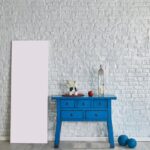What happens if home decor fabric gets wet? This is a common concern for homeowners who take pride in their interior design and invest in quality fabrics to enhance the look and feel of their living spaces. In this article, we will explore the potential consequences of wet home decor fabric, including damage to the fabric, implications for the overall appearance and functionality of the decor, and the risk of mold and mildew growth.
Home decor fabric getting wet can pose several dangers that could significantly impact its condition and aesthetic appeal. From discoloration and shrinkage to weakening of fibers and foul odors, the effects of water on fabric can be quite distressing. In addition, wet fabric can compromise the integrity of furniture upholstery or window treatments, ultimately reducing their longevity and value.
Common causes of home decor fabric getting wet include spills from drinks or food, leaks from plumbing or roofs, and high humidity levels in certain environments. Understanding these potential triggers can help homeowners take proactive measures to prevent water damage to their precious fabrics.
Moreover, different types of fabrics react differently when exposed to water. For example, while cotton may shrink or become distorted when wet, silk may become weak and lose its luster. Polyester, on the other hand, might be more resilient but could still suffer from issues like color bleeding or stretching when soaked. Recognizing these distinctions is crucial for effectively managing and restoring wet home decor fabric.
Common Causes of Home Decor Fabric Getting Wet
Home decor fabric can become wet for a variety of reasons, and it is important to understand the common causes in order to effectively prevent and manage the issue. Some of the most frequent reasons why home decor fabric might get wet include:
- Spills: Accidental spills from drinks, food, or other liquids can quickly soak into fabric upholstery or curtains, leading to wetness and potential damage.
- Leaks: Whether from a burst pipe, a leaking roof, or a malfunctioning appliance, water leaks in the home can result in significant wetness for fabric decor items.
- Humidity: High levels of humidity in the air can also contribute to home decor fabric becoming damp over time, especially in areas with poor ventilation.
Identifying these common causes of wet home decor fabric is crucial for implementing proactive measures to prevent such situations. By being aware of these factors, homeowners can take necessary steps to protect their fabric decor from potential damage due to moisture. Additionally, understanding the various reasons for wetness can help individuals effectively address and mitigate the issue when it does occur.
Effects of Water on Different Types of Fabric
When home decor fabric gets wet, it can have different effects depending on the type of fabric involved. Understanding how different fabrics react to water is crucial in effectively managing and minimizing damage to your home decor.
Cotton
Cotton is a popular choice for home decor fabric due to its durability and versatility. However, when exposed to water, cotton fabric is prone to shrinking, which can significantly alter the appearance and fit of any upholstered furniture or drapery. Additionally, the risk of color bleeding or fading is higher with cotton fabric when wet.
Silk
Silk is a delicate and luxurious fabric commonly used in home decor, but it is highly susceptible to water damage. When wet, silk fabric can become weakened and lose its lustrous sheen. Stains from water droplets or spills are also challenging to remove from silk without causing further damage.
Polyester
Polyester is known for its resistance to wrinkles and shrinking, making it a practical choice for home decor fabrics like curtains and upholstery. When wet, polyester fabric dries relatively quickly and retains its shape well. However, it can be prone to trapping odors if not properly dried after getting wet.
Understanding how each type of fabric reacts to water will enable you to take appropriate measures in preventing water damage as well as effectively managing any incidents involving wet home decor fabrics in your household.
Mold and Mildew Growth
There are several types of fabric that are particularly susceptible to mold and mildew growth when wet. Natural fibers like cotton and silk are especially prone to developing mold, while synthetic fibers like polyester may also be at risk if not dried properly. Mold and mildew can compromise the integrity of the fabric, leading to discoloration, weakening of the fibers, and overall deterioration of the material.
To prevent mold and mildew growth on home decor fabric, it is essential to address any instances of wetness promptly and effectively. This includes thoroughly drying the affected area as soon as possible, using fans or dehumidifiers if necessary.
Additionally, it’s important to clean the fabric with a solution that is specifically formulated to eliminate mold spores and prevent their regrowth. Regularly inspecting home decor fabric for any signs of moisture or dampness can also help prevent mold and mildew issues from developing in the first place.
In cases where mold and mildew have already taken hold on home decor fabric, professional cleaning services may be necessary for effective removal. Experts have access to specialized cleaning techniques and products that can safely eliminate mold and mildew without causing further damage to the fabric.
Tips for Preventing and Managing Wet Home Decor Fabric
Preventing Water Damage
One of the best ways to manage wet home decor fabric is to prevent it from getting wet in the first place. This can be done by using waterproof or water-resistant fabrics, especially in areas prone to spills or high humidity. Additionally, implementing preventative measures such as using coasters, placemats, and tablecloths can help protect fabric from accidental spills and leaks.
Another important tip for preventing water damage to home decor fabric is to address any potential sources of water quickly. This may include fixing leaky pipes, repairing damaged roofs, or installing dehumidifiers in areas with high moisture levels.
Managing Wet Fabric
If home decor fabric does get wet despite prevention efforts, it’s crucial to address the issue promptly to minimize damage. The first step is to remove any excess moisture as soon as possible. Blotting the fabric with a clean, dry cloth can help absorb some of the water before it has a chance to set in.
Once excess moisture has been removed, allowing the fabric to air dry thoroughly is essential. It’s important to avoid using heat sources such as hairdryers or heaters, as these can cause shrinkage or damage to certain types of fabric. Instead, air drying in a well-ventilated area is recommended.
Professional Cleaning Services
In cases where home decor fabric has sustained significant water damage, seeking professional cleaning services may be necessary. Professional cleaners have the expertise and specialized equipment required to effectively restore wet fabric without causing further harm. They can also provide advice on preventative measures and proper care for the specific type of fabric involved.
Restoration and Cleaning Techniques
When home decor fabric gets wet, it is important to address the issue promptly and effectively. Failure to do so can result in irreversible damage to the fabric, affecting its appearance and functionality. Depending on the type of fabric, exposure to water can lead to shrinkage, distortion, color bleeding, and weakening of the fibers. In addition, wet fabric is at risk for mold and mildew growth, which can pose health hazards and further deteriorate the fabric.
The method for restoring and cleaning wet home decor fabric depends on various factors such as the type of fabric, extent of water damage, and any specific stains or odors present. For light water exposure or small spills, immediate blotting with a clean, dry cloth can help absorb excess moisture. For more severe water damage or prolonged exposure, it may be necessary to seek professional cleaning services to restore the fabric to its original condition.
It’s important to note that different types of fabrics require different restoration and cleaning techniques. For example, delicate fabrics such as silk may need specialized care to avoid further damage during the cleaning process. On the other hand, synthetic fabrics like polyester are more resistant to water damage but may still require thorough drying and cleaning techniques.
| Types of Fabric | Restoration/Cleaning Techniques |
|---|---|
| Cotton | Hand wash with mild detergent or seek professional dry cleaning services |
| Silk | Blot gently with a clean cloth and consult a professional cleaner experienced in caring for silk fabrics |
| Polyester | Air dry thoroughly or use a gentle machine wash cycle if safe for the specific item |
Protecting Home Decor Fabric From Future Damage
When it comes to protecting home decor fabric from future damage, there are several measures that homeowners can take to prevent potential water damage. One of the most effective ways to protect home decor fabric is by using waterproofing treatments. These treatments create a barrier that repels water, preventing it from being absorbed by the fabric. Waterproofing sprays are widely available and can be applied to various types of fabric, including upholstery, curtains, and decorative pillows.
Another way to protect home decor fabric from future damage is by selecting moisture-resistant fabrics. Fabrics such as polyester, nylon, and acrylic are less prone to water damage compared to natural fibers like cotton or silk. When choosing fabrics for home decor, consider the location and use of the items in order to select materials that are better suited for potential exposure to moisture.
In addition to using waterproofing treatments and selecting appropriate fabrics, it’s also important to address any underlying issues that could contribute to water damage. This includes addressing leaks or moisture problems in the home that could lead to wet fabric. By identifying and fixing these issues promptly, homeowners can minimize the risk of future water damage to their home decor fabric.
| Measures for Protecting Home Decor Fabric | Benefits |
|---|---|
| Waterproofing Treatments | Create a barrier against water absorption |
| Moisture-Resistant Fabrics | Less prone to water damage than natural fibers |
| Addressing Underlying Issues | Minimize risk of future water damage by fixing leaks or moisture problems |
Final Thoughts and Conclusion
In conclusion, it is crucial to address wet home decor fabric promptly and effectively in order to prevent potential damage and maintain the overall appearance and functionality of the decor. Whether caused by spills, leaks, or humidity, water can have detrimental effects on various types of fabric, leading to mold and mildew growth as well as irreversible damage. It is important to be proactive in preventing wetness and managing it when it does occur.
To protect home decor fabric from future damage, consider using waterproofing treatments or selecting moisture-resistant fabrics. Additionally, be sure to follow restoration and cleaning techniques specific to the type of fabric involved. This may include seeking professional cleaning services for more delicate materials.
In essence, by understanding the dangers of wet home decor fabric, recognizing common causes of wetness, being aware of the effects on different fabric types, and learning how to prevent and manage the issue effectively, homeowners can ensure their decor remains in top condition for years to come. Taking these measures will ultimately save time and money in the long run while preserving the aesthetic appeal and longevity of home decor fabrics.
Frequently Asked Questions
Does Water Damage Fabric?
Water can absolutely damage fabric, depending on the type of fabric and the amount of water exposure. Some fabrics are more resistant to water, while others may become discolored, weakened, or even develop mold if they get wet. It’s important to address water damage to fabric as soon as possible to prevent further harm.
What Happens if Cotton Gets Wet?
When cotton gets wet, it can absorb a considerable amount of moisture, leading to changes in its appearance and texture. Wet cotton may shrink, lose its shape, or even develop mildew if not dried properly. It’s crucial to handle wet cotton carefully and ensure it dries thoroughly to avoid any long-term damage.
How Long Can Furniture Sit in Water Before Being Ruined?
If furniture sits in water for an extended period of time, it can be severely damaged and potentially ruined. The timeframe for irreversible damage varies depending on factors such as the type of furniture, the materials used, and the extent of the water exposure.
Generally, the longer furniture remains in water without proper drying and restoration efforts, the greater the risk of permanent damage or deterioration. Prompt action is essential to salvage water-damaged furniture effectively.

I’m thrilled to be your companion on this exciting journey through the world of home decor and design. With a passion for turning houses into homes and a keen eye for the finer details, I’m here to help you transform your living spaces into beautiful, functional, and meaningful havens.





